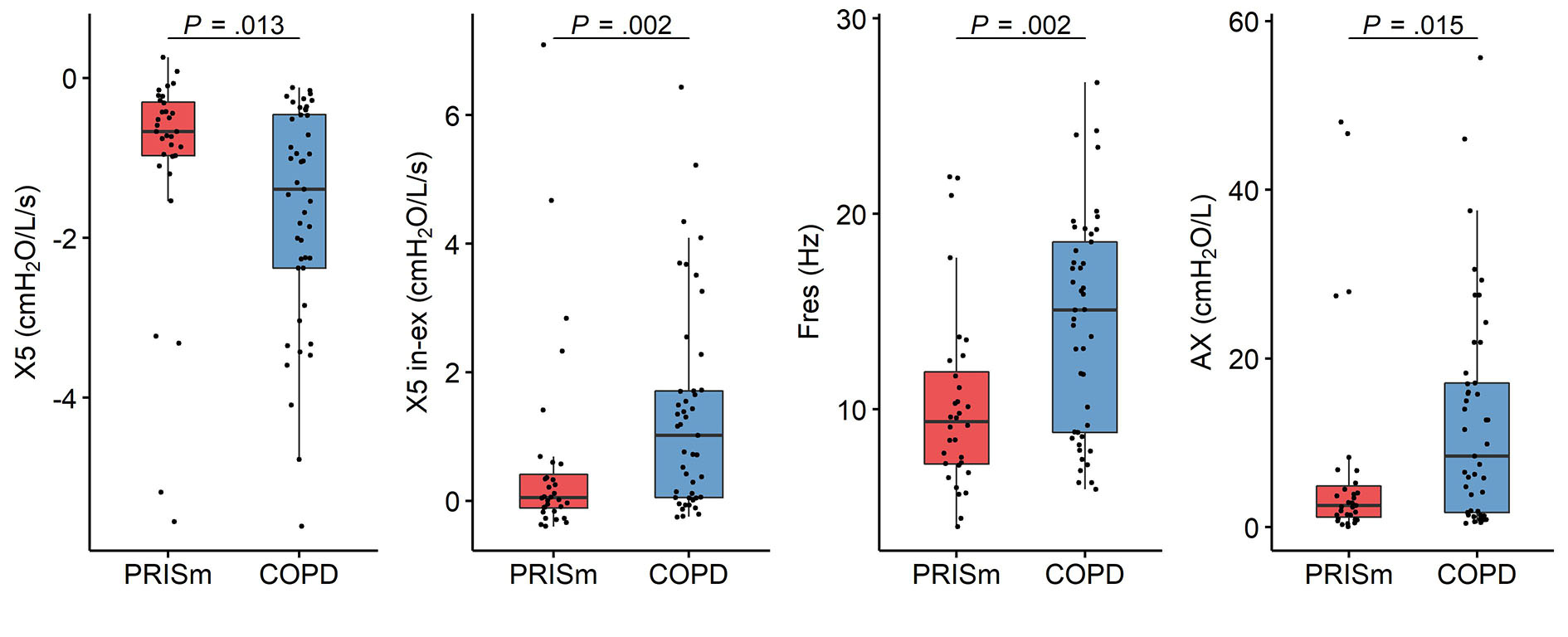Abstract
Background: Longitudinal data suggest that preserved ratio impaired spirometry (PRISm) might transition to COPD. Small airway dysfunction (SAD) has been considered a key feature of COPD; its early detection may help reduce symptoms and prevent progression to COPD. To date, the prevalence of SAD in PRISm is unknown.
Aims: To assess SAD in subjects with hospital-based PRISm and compare its prevalence to COPD patients.
Methods: Subjects included 1813 patients who visited Shizuoka General Hospital and underwent oscillometry and spirometry. PRISm was defined as FEV1/FVC ? 0.7 and %FEV1 < 0.8. Subjects with lung diseases, except for asthma, and neoplasms were excluded. SAD was defined as z-scores for one or more oscillometric parameters, including R5?R20, X5, Fres, and AX, were greater than 2. COPD patients included 45 SGH and 60 ASCOPE cohorts.
Results: 32 patients (1.8%) (24 with asthma and 8 others) were diagnosed as PRISm, and they were younger, less male-dominant, had higher BMI, more nonsmokers, and fewer pack-years than both COPD cohort patients. FEV1, FEF25-75%, and X5 were higher, and %FVC, Fres, and AX were lower in PRISm than in COPD (Figure 1). The prevalence of SAD was 4 (12.5%) in PRISm, whereas 24 (53.3%) in SGH and 21 (35.0%) in ASCOPE cohorts, which was statistically significant.
The prevalence of SAD was 4 (12.5%) in PRISm, whereas 24 (53.3%) in SGH and 21 (35.0%) in ASCOPE cohorts, which was statistically significant.
Conclusions: PRISm patients had less SAD than COPD patients. Treatment targeting small airways might prevent the progression to COPD.